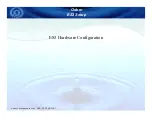
15
DAC-515E-EN-BF
8 Maintenance and Troubleshooting
8.1 Routine Maintenance
Although the Trainer AED is designed to be very low maintenance, simple
maintenance tasks must be performed by the owner/operator on a regular basis
to ensure the Trainer’s dependability.
• Check the Trainer AED and accessories for damage, dirt, and
contamination. Clean or replace as necessary.
• Check that the Training Battery Pack is fully charged.
• Check that the remote control is fully-functional. Replace the 2 AAA
batteries if necessary.
Note:
If the Trainer AED or any of its accessories have been dropped, mishan-
dled, or abused, a thorough evaluation of operation should be performed.
8.2 Cleaning
After each use, clean the Trainer AED of any dirt or contaminants on the case and
connector socket. The following are important guidelines to be adhered to when
cleaning the device:
• The Training Battery Pack should be installed when cleaning the Trainer
AED.
• Do not immerse the Trainer AED in fluids or allow fluids to enter the
Trainer AED.
• Do not spray cleaning solutions directly on the Trainer AED or its
connectors.
• Do not use abrasive materials or strong solvents such as acetone or
acetone based cleaning agents.
• To clean the Trainer AED’s exterior, use a soft cloth dampened with one of
the following recommended cleaning agents:
– Soapy water
– Ammonia based cleaners
– Hydrogen peroxide
– Isopropyl alcohol (70 percent solution)
– 3 percent chlorine bleach/water mixture
• Ensure that the connector socket is completely dry before reinstalling the
pads cable. After cleaning, allow the Trainer AED to completely dry.
Please note that none of the items included with the Trainer AED (including the
Trainer AED unit itself) are sterile or require sterilization.
WARNING
Do not sterilize the Trainer AED or its accessories.












































